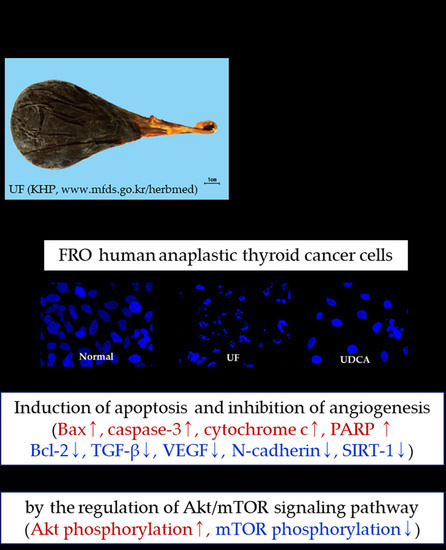Anticancer Effects of Ursi Fel Extract and Its Active Compound, Ursodeoxycholic Acid, in FRO Anaplastic Thyroid Cancer Cells
Abstract
Share and Cite
Jung, H.W.; Hwang, J.H. Anticancer Effects of Ursi Fel Extract and Its Active Compound, Ursodeoxycholic Acid, in FRO Anaplastic Thyroid Cancer Cells. Molecules 2021, 26, 5309. https://doi.org/10.3390/molecules26175309
Jung HW, Hwang JH. Anticancer Effects of Ursi Fel Extract and Its Active Compound, Ursodeoxycholic Acid, in FRO Anaplastic Thyroid Cancer Cells. Molecules. 2021; 26(17):5309. https://doi.org/10.3390/molecules26175309
Chicago/Turabian StyleJung, Hyo Won, and Ji Hye Hwang. 2021. "Anticancer Effects of Ursi Fel Extract and Its Active Compound, Ursodeoxycholic Acid, in FRO Anaplastic Thyroid Cancer Cells" Molecules 26, no. 17: 5309. https://doi.org/10.3390/molecules26175309
APA StyleJung, H. W., & Hwang, J. H. (2021). Anticancer Effects of Ursi Fel Extract and Its Active Compound, Ursodeoxycholic Acid, in FRO Anaplastic Thyroid Cancer Cells. Molecules, 26(17), 5309. https://doi.org/10.3390/molecules26175309






